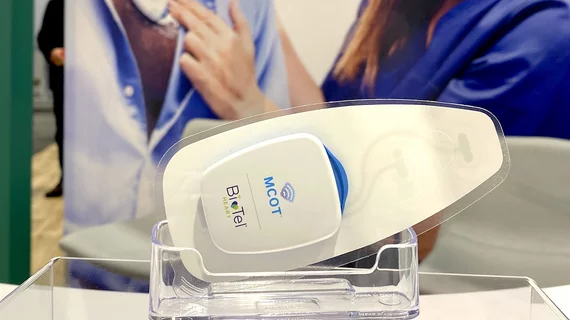ACC offers practical approaches for arrhythmia monitoring after stroke
The American College of Cardiology (ACC) recently published a new expert consensus document on practical approaches for arrhythmia monitoring after stroke. The guidance offers clinicians tailored strategies to improve post-stroke care by identifying and managing atrial fibrillation (AF) and other arrhythmias linked to recurrent stroke risk.
The ACC Solution Set Oversight Committee's "2024 ACC Expert Consensus Decision Pathway on Practical Approaches for Arrhythmia Monitoring After Stroke" includes comprehensive guidance for arrhythmia detection based on stroke subtype, leveraging extended monitoring and implantable cardiac monitors where appropriate.[1] The document offers a detailed evaluation of medical-grade and consumer-grade monitoring devices to support clinicians in selecting the right tools for individual patients. The document also emphases collaboration between clinicians and patients to personalize monitoring
strategies and treatment plans.
“There is growing consensus on the role of cardiac rhythm monitoring in patients after a stroke that is informed by outcomes of several recent landmark trials,” said Michael T. Spooner, MD, MBA, FACC, writing committee chair and director of electrophysiology and program director of the Mercy One North Iowa Cardiovascular Fellowship, in a statement from ACC. “Although improved monitoring leads to improved detection of arrhythmia after a stroke, there remains less clarity on the effect this detection has on secondary stroke prevention.”
Stroke is a leading cause of disability and death worldwide and identifying its underlying cause is critical to preventing recurrent events. AF is a common but often silent arrhythmia, and it significantly increases stroke risk.
Traditional methods of AF diagnosis, including brief electrocardiogram (ECG) recordings, often fall short of capturing transient AF, so longer duration of monitoring can increase the rate of AF detection, was one of the key takeaways from list created by Geoffrey D. Barnes, MD, MSc, FACC, associate professor, Frankel Cardiovascular Center, University of Michigan. He noted the document also states the longer the time interval between the ischemic stroke and the detected AF episode decreases the likelihood of AF as a proximal cause of the prior event.
Barnes said in his takeaways that various technologies have been developed to identify AF, including continuous or intermittent ambulatory ECG monitors, which have gained wide adoption in the past few years. There are also medical-grade monitors (typically electrical activity monitoring) and consumer-grade monitors (either electrical activity monitoring or photoplethysmography) can also help in monitoring these patients.
Arrhythmia monitoring after a stroke requires three important steps. First, a multidisciplinary evaluation should be undertaken to identify potential mechanism for stroke. Second, risk assessment is performed to determine the likelihood that a cardiac arrhythmia played a role in the stroke (or future stroke). Third, an optimal monitoring strategy should be selected to be accurate, practical, and establish follow-up.
For patients in whom arrhythmia monitoring detects >5 minutes of AF, anticoagulation is likely recommended. This is particularly true if their CHA2DS2-VASc score is ≥3. For those with no AF, continuing antiplatelet therapy is recommended, Barnes wrote.

